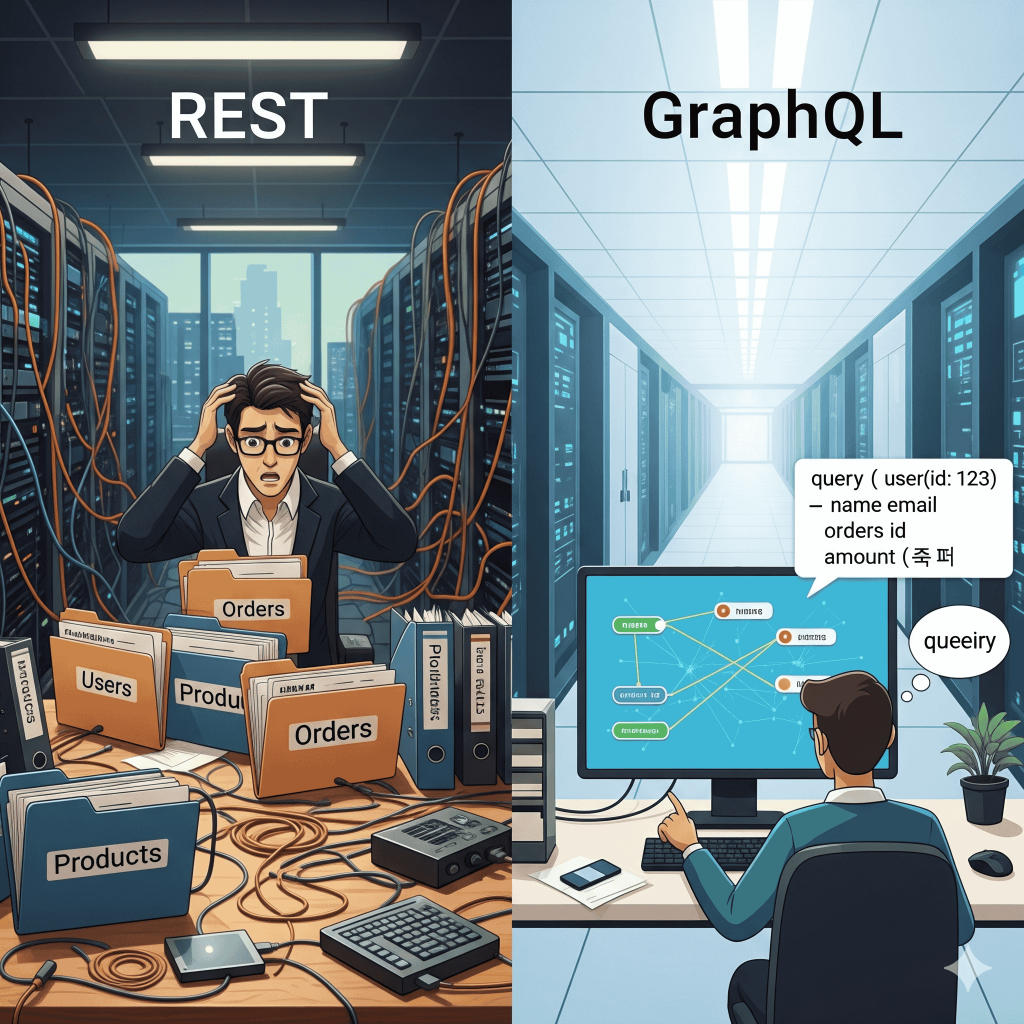Introduction
APIs are the backbone of modern web applications, connecting the frontend with the backend and third-party services. When building APIs, two major approaches dominate: REST (Representational State Transfer) and GraphQL.
But which one should you choose for your project? In this post, we’ll break down REST vs GraphQL, compare their pros and cons, and help you decide which API architecture is best for your application.
1. What is REST API?
REST APIs are built around resources, identified by URLs.
- Uses HTTP methods: GET, POST, PUT, DELETE.
- Follows stateless architecture.
- Data often returned in fixed structures (JSON/XML).
Example:GET /users/1 → returns data for a specific user.
👉 REST is widely used, simple, and works well for most applications.
2. What is GraphQL?
GraphQL is a query language for APIs developed by Facebook.
- Clients request only the data they need.
- Single endpoint for all queries.
- Supports real-time data with subscriptions.
Example:
{
user(id: "1") {
name
email
}
}
👉 GraphQL eliminates over-fetching and under-fetching of data.
3. REST vs GraphQL: Key Differences
| Feature | REST | GraphQL |
|---|---|---|
| Endpoints | Multiple URLs (e.g., /users, /posts) | Single endpoint (e.g., /graphql) |
| Data Fetching | Returns full resource | Returns only requested fields |
| Versioning | New endpoints required | No versioning, schema evolves |
| Performance | May over-fetch or under-fetch | Optimized queries, less data transfer |
| Learning Curve | Easier for beginners | Steeper (requires schema knowledge) |
4. When to Use REST
Choose REST when:
- Your API is simple and resource-based.
- You want easy caching with HTTP.
- Your app doesn’t require real-time updates.
👉 Example: A blog site with standard CRUD operations.
5. When to Use GraphQL
Choose GraphQL when:
- You need complex queries with nested data.
- Your app requires real-time features.
- You want to reduce bandwidth (mobile-first apps).
👉 Example: Enterprise dashboards, social media apps, e-commerce platforms.
6. Performance & Scalability
- REST: Can be less efficient for mobile apps with poor networks.
- GraphQL: Reduces payload size, but queries can be complex and harder to optimize.
7. Implementation Tools
- REST: Express.js, Django REST, Laravel API.
- GraphQL: Apollo Server, GraphQL Yoga, Hasura.
Conclusion
Both REST and GraphQL have their place in modern development. REST is simple, reliable, and well-supported, while GraphQL offers flexibility and efficiency for complex applications.
👉 At Redirect India, we specialize in API development (REST & GraphQL), ensuring your app gets the right architecture for performance and scalability. Contact us to build secure and future-ready APIs.



